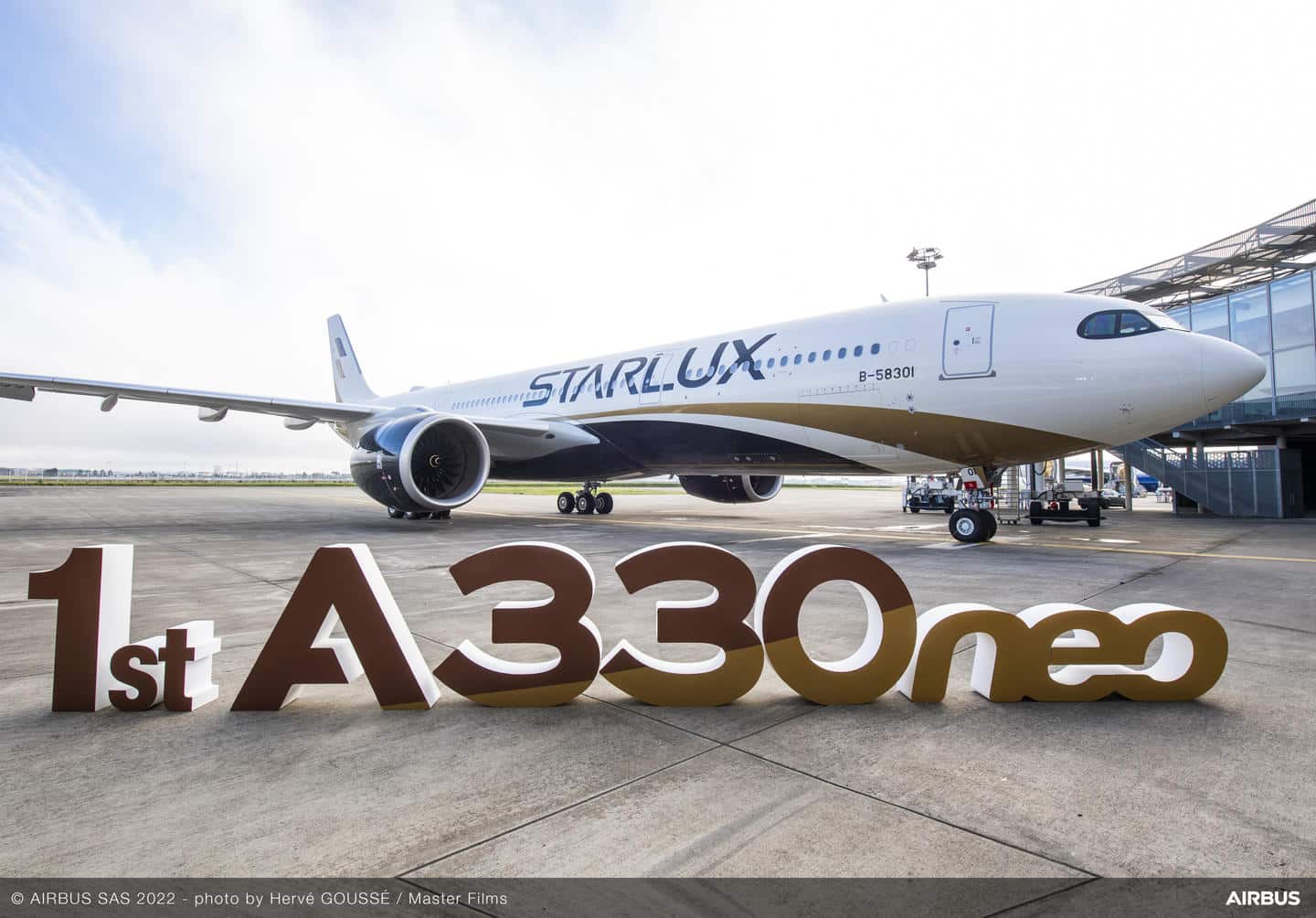Aviation
STARLUX launches widebody fleet with first A330neo

Toulouse, 21 February 2022 – Taiwan’s STARLUX Airlines has taken delivery of its first widebody aircraft – an A330-900. It is the first of 26 Airbus widebodies set to join the airline’s fleet, comprising eight A330neo and 18 A350s..
The A330neo aircraft and one A350 are being acquired on lease from ALC, while the airline has 17 A350s on direct order with Airbus. Benefiting from the A330neo’s unbeatable operating economics and award-winning Airspace cabin, the aircraft will feature a two-class cabin with 28 business class seats and 269 economy class seats.
The A330neo joins an existing fleet of seven single-aisle A321neo at the airline, and will complement the airline’s network by flying regional routes from Taiwan to the wider Asia-Pacific.
At the same time, STARLUX has also signed up for the computer-based ACE (Airbus Cockpit Experience) Suite training solution. Using a “learning by discovery” approach, STARLUX’s flying crew will be able to use the ACE Trainer that simulates a 3D Cockpit environment with guided lessons and free play.
ACE Suite offers an efficient learning process that also provides customers with significant time savings off high-level devices training. Users can enjoy better knowledge retention and continuous skills reinforcement. ACE Suite is approved by EASA and in line with ICAO regulations.
“I am delighted to welcome our first A330neo, as it marks a key milestone in our growth. Having already operated modern and efficient single-aisle A321neo, we are confident that the A330neo will bring even more flexibility and efficiency in our network strategy, whilst optimising cost efficiency and achieving high passenger comfort,” K.W. Chang, Founder and Chairman of STARLUX Airlines. “We are also looking forward to starting to take delivery of our A350s in the coming months.”
Emirates to debut its new fully enclosed First Class Private Suite for the first time at ATM
“We are excited to work closely with STARLUX to build their new fleet,” said Christian Scherer, Airbus Chief Commercial Officer. “Together the A321neo, A330neo and A350 will enable the carrier to benefit from the unique technical commonality and efficiency offered by our latest generation aircraft. In addition they offer the best levels of comfort in their respective size categories, which will be a key element for STARLUX in delivering its premium in-flight experience.”
United Airlines fined $1.9 million for long ground delays
At the end of January 2022, the A330 Family had won over 1,800 orders (including 353 A330neo from 23 customers worldwide)

Aviation
Boeing, Antonov to Collaborate on Defense Projects

– MOU represents Boeing’s commitment to work with Ukrainian industry
– Includes exploring opportunities for collaborating on in-country support of Unmanned Aerial Systems
A Memorandum of Understanding was signed today by Boeing and Antonov Company to investigate potential collaboration on defense-related projects.
“We’re happy to keep collaborating with the Antonov Company to help Ukraine’s economic development and expansion,” stated Ted Colbert, CEO and president of Boeing Defence, Space, & Security.
Airbus and the Antonov An-225: The Best Partnership:Click here
“This agreement demonstrates our ongoing efforts to find more opportunities to work with Ukrainian industry, which was underscored by our signing of the Ukrainian Defence Industry Compact earlier this year.”
The areas of potential collaboration identified in the agreement consist of training, logistical support and overhaul services for tactical Unmanned Aerial Systems utilized by the Ukrainian Armed Forces, which includes the ScanEagle. In addition, the companies will also explore opportunities for Antonov to provide engineering support to Boeing.
The six largest cargo aircraft ever built in the aviation industry:Click here
“A strong, innovative, and efficient defense industry is key to sustainable economic development and national security, and we are extremely excited to collaborate with Boeing,” said Ievhen Gavrylov, CEO of Antonov Company.
This agreement brings a whole new level of opportunity to implement the latest and most effective solutions – in addition to the possibility of future projects with Boeing in the aerospace and defense industry.”
-

 Travel1 week ago
Travel1 week agoAir India to Expand US Operations with Three New Routes After a Decade
-

 Travel2 weeks ago
Travel2 weeks agoWhy We Should Avoid These Stamps in a Passport
-

 Airlines1 month ago
Airlines1 month agoInvestigations Reveal Fake Chinese Titanium in Boeing and Airbus Jets
-

 Tech4 weeks ago
Tech4 weeks agoChina’s CATL Plans 1,800-Mile Electric Plane Launch by 2027
-

 Airport3 days ago
Airport3 days agoTop 10 Largest Airports in the World by Size
-

 Aerospace4 weeks ago
Aerospace4 weeks agoChina’s Fighter Jets Turn Wings into Autonomous Drones
-

 Airlines4 days ago
Airlines4 days agoAir India Rolls Out A350s for Delhi-New York JFK and Newark Routes
-

 Defence3 weeks ago
Defence3 weeks agoBoeing Enhances Chinook with New Engines and Block II Upgrades at $96 Million







